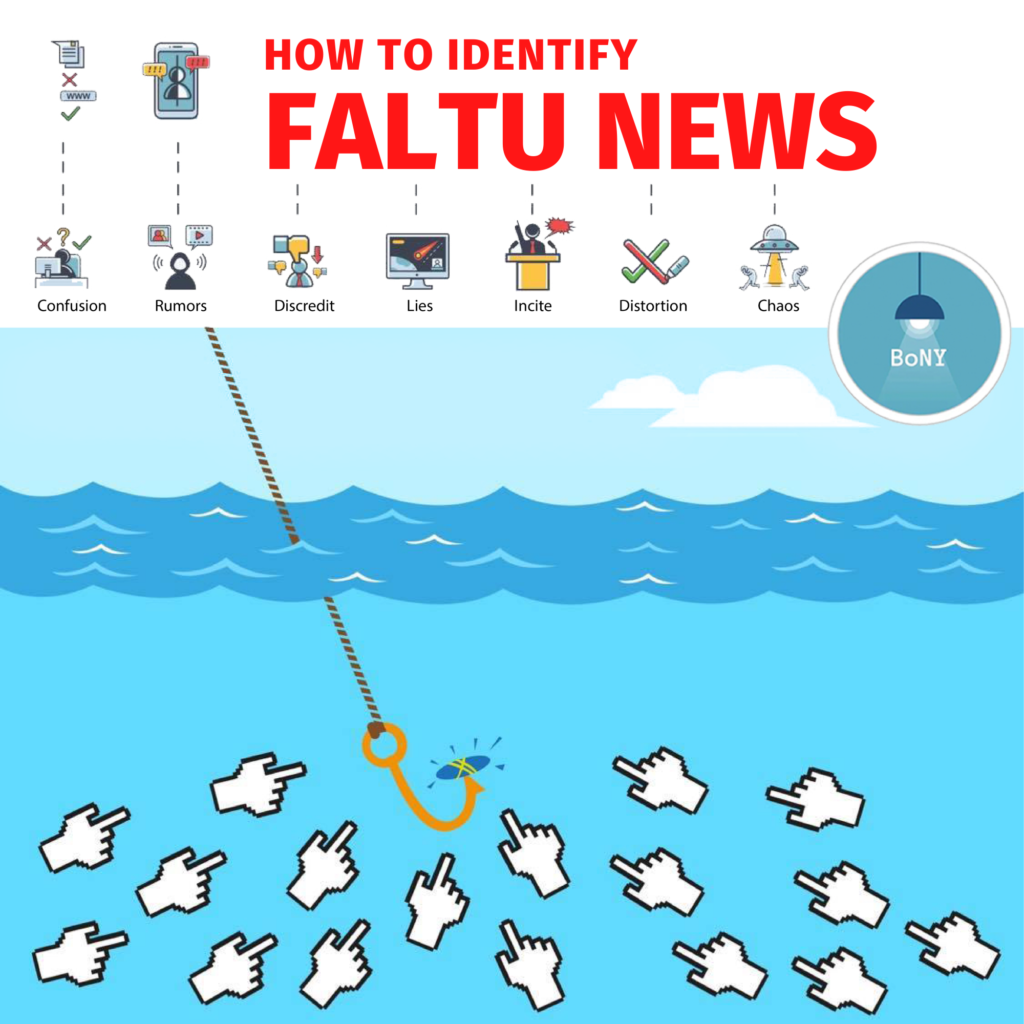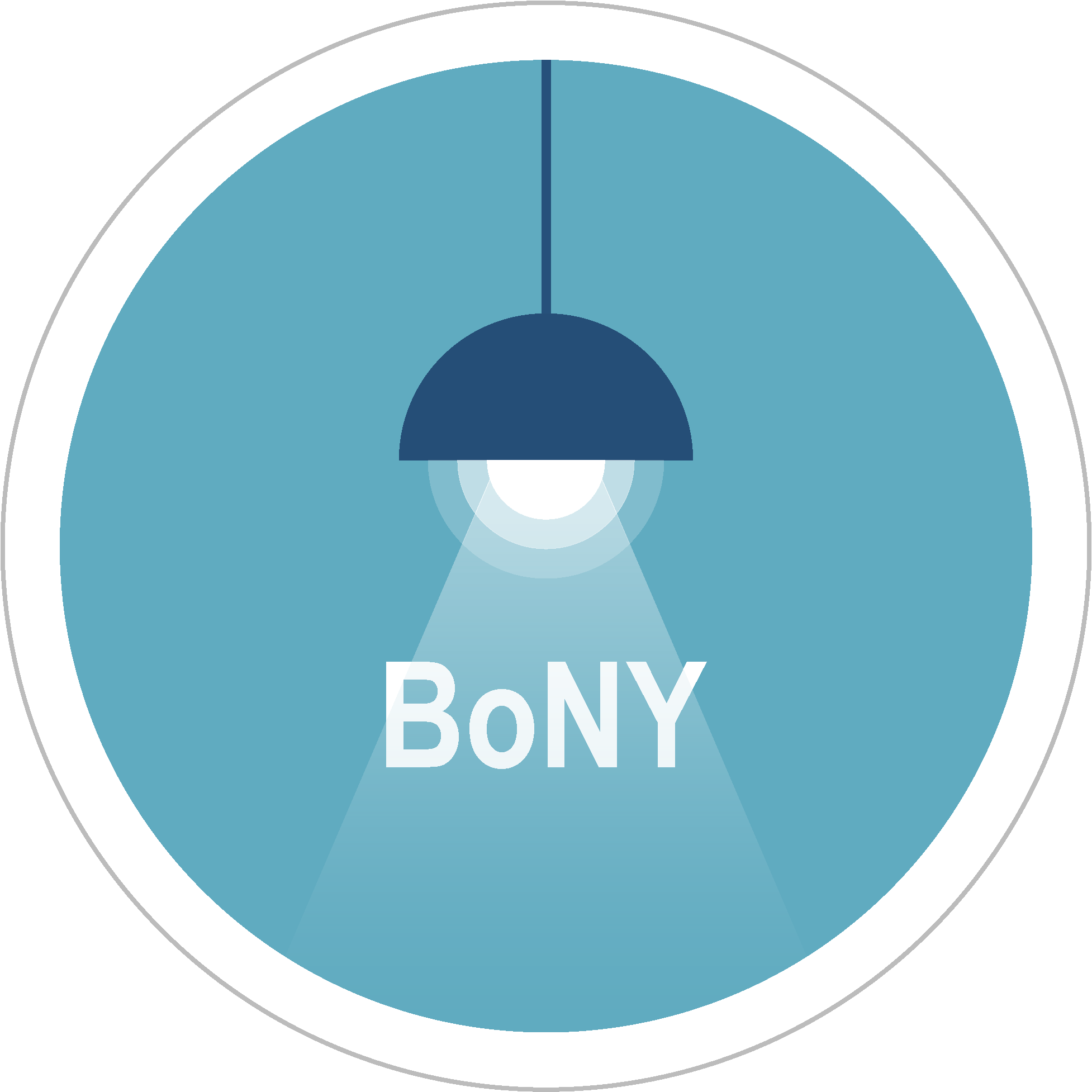Stop Faltu News

By Kamrul Khan
No, it’s not just your parents and uncles sending you incredibly misleading articles and memes. According to Pew Research, approximately 65% of American adults access the news through social media. Through shares and reposts, we participate in the re-circulating of the news that we find interesting and trustworthy. Sometimes, the information we share is not accurate, and that’s a problem. Once a lie is told online, it’s difficult to retrieve it, quarantine it, and debunk it. Journalists try very hard to correct wrong info on social media, but are outnumbered by all the Bengali aunties and uncles sharing them!
Below is an example of something that has been shared by 99% of Bengali aunties and uncles.
If it doesn’t make you scream “Faltu News!” it should. Below are specific types of things to look for in false memes, pictures and posts on the internet and especially on social media.

- “Big Breaking” is not a complete heading. If you are to assume that the full heading is “Big Breaking News,” that would not make sense either because the width of the article should end where the picture ends, so there is no more room for the word “News.”
- The font for “COVID-19 is confirmed…” is not consistent with the font immediately underneath the picture and blurry red words in the same line. It looks like someone took the picture of the original WHO article and transposed their own words onto it.
- Professional articles will not typically have that many exclamation marks in their headings.
The heading is grammatically incorrect. “Remain” should be “Remains” and “Mask” should be “Masks.” Not to say that reputable organizations don’t make grammatical mistakes, but this coupled with everything else that is fishy about this post should give you caution before sharing.
If that isn’t enough, here are a few other things you can do to verify the accuracy of the above.
- Google the caption that is directly underneath the picture with the letters CNBC. The first result is the original CNBC Article (here it is). Read or do a Cntrl+F search for the number “8,” and you will see no results. That is because the CNBC article did not state that the virus is confirmed to be airborne and remain 8 hours in air.
- Google “WHO 8 hours coronovirus” and the very first result is a Politifact article debunking this exact post (here).
A few seconds is all it takes to verify a post on social media and the internet. Misinformation can be dangerous, below are some other things you can do.
- Google the exact headline that seems suspicious. You should immediately see links debunking it if it’s fake. Snopes.com and Reported.ly or even bulletin boards like reddit.
- Check the source. There are many faltu (technical term) websites that have credible-sounding names. Go to the site’s “About” tab. It may acknowledge the site’s bias.
- If it’s a site for only one purpose or cause, then it’s clearly biased. Also, a reputable source includes hyperlinks to research, while a fake site offers no backup and may have spelling and grammatical errors (i.e., most Trump supporter sites).
- For photos or memes: You can do an image search on Google by uploading the suspicious photo into a search on Google Images. [Right-click on the photo, save it to your desktop, then drag it to the image-search box] Then you can verify the subject of the photo and where it has appeared online.
- For political ads: statements that are meant to provoke extreme emotion, notably sadness or anger. Before letting your whole ghusti know your thoughts, check the statement’s validity against neutral, intelligent sources. Here are a few: NPR, PolitiFact.com, and FactCheck.org
- Did you already share something and you realized its faltu-ness afterwards? Correct it. Contact the uncle who shared your post and let them know it was wrong and then delete the original and post an apology explaining how it happened and provide corrected facts.
- If someone you know has posted something that is extremely faltu, try to avoid making them like a gadha; keeping it respectful. You could reply: “Bhaia, hold on! iLoveDhal.com is not a reliable website, so it’s not possible to contract the Corona from standing too close to the microwave. Here’s some info from the Mayo Clinic. Check it out!”
Look, we all have good intentions. It’s tempting to want to repost and share something that we think is informative or helpful but sharing misinformation just causes more confusion and fights at dawats (remember those?) Incorrect posts also get in the way of real information that can be helpful and informative. Even after all of the above, you are unsure if a post is accurate, it’s best not to share it. Together, we can put an end to faltu news.
Translated to Bangla By Shakil Hussain
না, কেবলমাত্র আপনার পিতা-মাতা এবং চাচা মামারাই আপনাকে বিভ্রান্তিমূলক নিবন্ধ এবং মীমস প্রেরণ করছেন না| পিউ রিসার্চ অনুসারে, প্রায় ৬৫% আমেরিকান প্রাপ্তবয়স্করা সামাজিক যোগাযোগ মাধ্যমে এরকম বিভ্রান্তিমূলক সংবাদ খুঁজে পায়। শেয়ার আর রিপোস্ট এর মাধ্যমে এসব সংবাদ আমার নিজেরাই সক্রিয়ভাবে ছড়িয়ে দিতে সাহায্য করি| এইসব সংবাদ বা তথ্যগুলো যা আমরা শেয়ার করি অনেকসময় তা সঠিক নয়, আর সেটাই হলো একটি সমস্যা| একটি মিথ্যা যখন অনলাইনে ছড়িয়ে পড়ে, সেটাকে উদ্ধার করা, নিয়ন্ত্রণ করা কিংবা অনাবৃত করা অনেক কঠিন হয়ে যায়|
সাংবাদিকরা সোশ্যাল মিডিয়ায় ভুল তথ্য সংশোধন করার জন্য খুব চেষ্টা করে, তবে এই সমস্ত বাঙালি চাচা চাচীদের এই অবাধ শেয়ার করাটা ও সাংবাদিকদের চেষ্টাকে হার মানায়|
নীচে উদাহরণ স্বরূপ একটি সংবাদ দেওয়া আছে যা ৯৯% বাঙালি চাচা-মামারা শেয়ার করেছেন।
এই সব সংবাদ দেখে যদি আপনার “ফালতু নিউজ” বলে চিৎকার না করতে মন চায় তবুও চিৎকার করা উচিত। ইন্টারনেটে এবং বিশেষত সোশ্যাল মিডিয়ায় মিথ্যা মীমস, ছবি এবং পোস্ট যাচাই করার জন্য নীচে নির্দিষ্ট কিছু নিয়ম দেয়া হলো।

- “বিগ ব্রেকিং” শিরোনামটা সম্পূর্ণ নয়। আপনি যদি অনুমান ও করেন যে পুরো শিরোনামটি হলো “বিগ ব্রেকিং নিউজ”, তবুও এটা অর্থবহুল হবে না কারণ নিবন্ধটির প্রস্থ সেখানেই শেষ হওয়া উচিত যেখানে ছবিটি শেষ হয়েছে, আর সে অনুসারে এখানে “নিউজ” শব্দের আর কোনও জায়গা নেই|
- “COVID-19 ইজ কনফার্মড…(COVID-19 is confirmed)” এর জন্য যে ফন্ট বা টাইপিং এর ধরন ব্যবহার করা হয়েছে সেটা ছবির ঠিক নিচে এবং একই লাইনের অস্পষ্ট লাল বর্ণের সাথে মিলছে না| দেখেই মনে হচ্ছে যে কেউ WHO এর আসল সংবাদের ছবি তুলে নিজের ইচ্ছেমত শব্দ লাগিয়ে দিয়েছে|
- পেশাদার সংবাদের শিরোনামগুলিতে সাধারণত বিস্মৃত চিহ্ন একটার বেশি থাকে না| (এখানে আছে দুটি)
- শিরোনামটি ব্যাকরণগতভাবে ভুল। “Remain” হওয়া উচিত “Remains” এবং “Mask”(মাস্ক) হওয়া উচিত “Masks”(মাস্কস)। এটি বলার অপেক্ষা রাখে না যে পেশাধারী সংস্থাগুলি ব্যাকরণগত ভুল করে না, তবে এই মশালাদার পোস্টটি শেয়ার করে নেওয়ার আগে আপনার সাবধানতা অবলম্বন করা উচিত।
যদি তা ও পর্যাপ্ত না হয় তবে উপরের সংবাদের যথার্থতা যাচাই করতে আপনি আরও কয়েকটি কাজ করতে পারেন|
- সিএনবিসি (CNBC) অক্ষরগুলির সাথে ছবির নীচে থাকা ক্যাপশনটি গুগল করেন। প্রথম ফলাফলটি মূল সিএনবিসি (CNBC) আর্টিকেল বা সংবাদ| সংবাদটি পড়েন বা Cntrl+F সার্চ করেন “৮” লিখে এবং আপনি কোনও ফলাফল দেখতে পাবেন না। এর কারণ হলো সিএনবিসির নিবন্ধে বলা হয়নি যে ভাইরাসটি বায়ুবাহিত এবং ৮ ঘন্টা বায়ুতে থাকে|
- গুগল করেন “WHO 8 hours Coronavirus”এবং একেবারে প্রথম ফলাফলে পাবেন একটি (Politifact) পলিটিফ্যাক্ট নিবন্ধ যা এই সঠিক সংবাদটি প্রকাশ করছে।
সোশ্যাল মিডিয়া এবং ইন্টারনেটে কোনও পোস্ট যাচাই করতে মাত্র কয়েক মিনিট লাগে| ভুল তথ্য বিপজ্জনক হতে পারে, নীচে আরো কিছু কাজ দেয়া আছে আপনি করতে পারেন যা সংবাদের যথার্থতা যাচাই করতে আপনাকে সাহায্য করতে পারে|
- যে শিরোনাম সন্দেহজনক বলে মনে হচ্ছে সেটা গুগল করেন। এটি যদি ভুল সংবাদ হয় তবে অবিলম্বেই আপনি লিংক পাবেন যেখানে এর সত্যতা যাচাই করা হয়েছে। Snopes.com and Reported.ly এমনকি reddit এর মতো বুলেটিন বোর্ডগুলিতে আপনি খুঁজে দেখতে পারেন।
- সংবাদের আসল উৎস পরীক্ষা করুন। অনেকগুলি ফালতু (প্রযুক্তিগত শব্দ) ওয়েবসাইট রয়েছে যার নাম শুনতে বিশ্বাসযোগ্য মনে হয়। এই সব সাইটের “About” ট্যাবে যান। এটি সাইটের পক্ষপাতিত্ব দেখাতে পারে।
- যদি এই ওয়েবসাইটটি কেবলমাত্ৰ একটি উদ্দেশ্য বা কারণের জন্য হয়ে থাকে তবে এটি স্পষ্টভাবে পক্ষপাতি।এছাড়াও, একটি যুগ্য ওয়েবসাইটে গবেষণার জন্য হাইপারলিঙ্কগুলি অন্তর্ভুক্ত রয়েছে, কিন্তু একটি নকল ওয়েবসাইটে সেরকম কিছুই দেয় না এবং এতে বানান ও ব্যাকরণগত ত্রুটি থাকে (যেমন, বেশিরভাগ ক্ষেত্রে ট্রাম্প সমর্থক ওয়েবসাইট)।
- ফটো বা মীমস এর ক্ষেত্রে: আপনি সন্দেহজনক ছবি পরীক্ষা করতে পারেন গুগল ইমেজেস (Google Images) এ চিত্রগুলি আপলোড করে সার্চ করলে| [ফটোতে ডান ক্লিক করুন, এটি আপনার ডেস্কটপে সেভ করুন এবং তারপরে এটি image-search বাক্সে টানুন] তারপরে আপনি ফটোটির বিষয় যাচাই করতে পারবেন এবং এটি অনলাইনে আর কোথায় কোথায় দেখা গিয়েছে।
- রাজনৈতিক বিজ্ঞাপনের ক্ষেত্রে: যে সব বিবৃতিগুলি চরম আবেগ উৎসাহিত করে, বিশেষত দুঃখ বা ক্রোধ। আপনার চৌদ্ধ গোষ্ঠীটিকে আপনার চিন্তাভাবনা জানানোর আগে বিবৃতিটির বৈধতা পরীক্ষা করে দেখুন নিরপেক্ষ ও বুদ্ধিমান উৎস থেকে। এখানে কয়েকটি বিশ্বাসযোগ্য মধ্যম: NPR(এনপিআর), PolitiFact.com(পলিটিফ্যাক্ট ডট কম) এবং FactCheck.org(ফ্যাক্টচেক ডট অর্গ)
- আপনি কি ইতিমধ্যে এমন কিছু শেয়ার করেছেন যেটা পরে অনেক ফালতু মনে হয়েছে? এটা ঠিক করেন| যে চাচা মামারা আপনার পোস্টটি শেয়ার করে ফেলেছেন তাদের সাথে যোগাযোগ করুন, তাদের জানান এটি ভুল, পোস্টটি সরিয়ে ফেলেন এবং এটি কীভাবে ঘটেছে তা ব্যাখ্যা করে ক্ষমা চেয়ে পোস্ট করুন সঠিক তথ্য সহকারে|
- আপনার পরিচিত কেউ যদি এমন কিছু পোস্ট করে থাকেন যা কি না চূড়ান্তই ফালতু, তবে তাদেরকে গাধা বানানোর চেষ্টা এড়িয়ে চলুন; শ্রদ্ধা সহকারে। আপনি জবাবে বলতে পারেন: “ভাইয়া, দাঁড়ান! iLoveDhal.com কোনও নির্ভরযোগ্য ওয়েবসাইট নয়, তাই মাইক্রোওয়েভের খুব কাছে দাঁড়ালে আপনার শরীরে কোরোনাভাইরাসের সংক্রমণ হবে না। মায়ো ক্লিনিকের কিছু তথ্য আছে এখানে। এটা দেখেন!”
দেখুন, আমাদের সবার ভাল উদ্দেশ্য আছে। আমরা তথ্যবহুল বা সহায়ক বলে মনে করি এমন কিছু পুনরায় পোস্ট করতে এবং শেয়ার করার লোভ সামলাতে পারি না তবে ভুল তথ্য শেয়ার করার পর দাওয়াত খেতে গিয়ে বিভ্রান্তি সৃষ্টি আর মারামারি করি (ওই দায়াতগুলি মনে পড়ে?) ভুল পোস্টগুলিও সত্যিকারের তথ্যকে বিকৃত করে যা আসলে সহায়ক এবং শিক্ষণীয় হতে পারতো। উপরোক্ত সমস্ত কিছু সত্ত্বেও যদি আপনি কোনও পোস্ট এর সত্যতা সম্পর্কে অনিশ্চিত থাকেন , তাহলে এটি শেয়ার না করাই ভাল। একত্রিত হয়ে, আমরা ফালতু সংবাদ ছড়ানো দমন করতে পারি।
Read More
The Legacy of Boi Mela
Every year in February, the month-long national book fair welcomes...
Read MoreMillennial Amma: How to Explain a Global Crisis As a Parent
Rumki Chowdhury shares tips for how to talk to children...
Read MoreBegum Rokeya’s Millennials
A tribute to a pioneering Bengali feminist writer, educator and...
Read More



